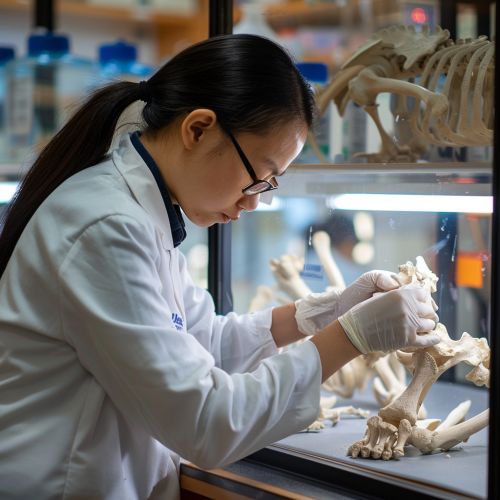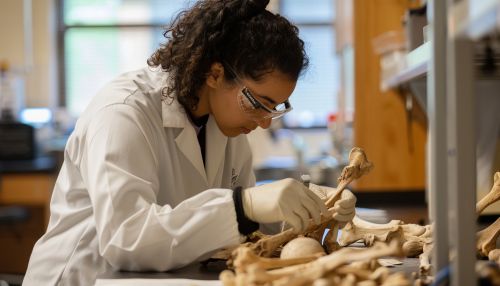Zooarchaeology
Introduction
Zooarchaeology, also known as archaeozoology, is a multidisciplinary field that combines archaeology and zoology to study the relationships between humans and animals throughout history. This field of study is crucial in understanding the roles animals have played in human societies, including their use for food, clothing, tools, and ritualistic purposes.


History and Development
The origins of zooarchaeology can be traced back to the 19th century when archaeologists began to recognize the importance of animal remains in archaeological contexts. Early zooarchaeologists primarily focused on the identification of species from bone fragments, but the field has since evolved to encompass a wide range of studies, including the analysis of animal behavior, diet, and domestication processes.
Methodology
Zooarchaeologists employ a variety of methods to analyze animal remains. These methods include osteological analysis, which involves the study of the structure and function of bones, and taphonomic analysis, which examines the processes that affect animal remains after death, such as decomposition and fossilization.
Applications
Zooarchaeology has a wide range of applications in archaeological research. It can provide insights into past human diets, hunting strategies, and animal domestication processes. Furthermore, zooarchaeology can contribute to our understanding of past environmental conditions and human-induced environmental changes.
Challenges and Limitations
Despite its many applications, zooarchaeology also faces several challenges and limitations. These include the difficulty of identifying species from fragmented or weathered bones, the potential for bias in archaeological assemblages, and the complexities involved in interpreting archaeological data.
Future Directions
The future of zooarchaeology lies in the integration of new technologies and methodologies. Advances in DNA sequencing, isotopic analysis, and digital imaging techniques promise to enhance our understanding of past human-animal relationships and contribute to broader archaeological research.
